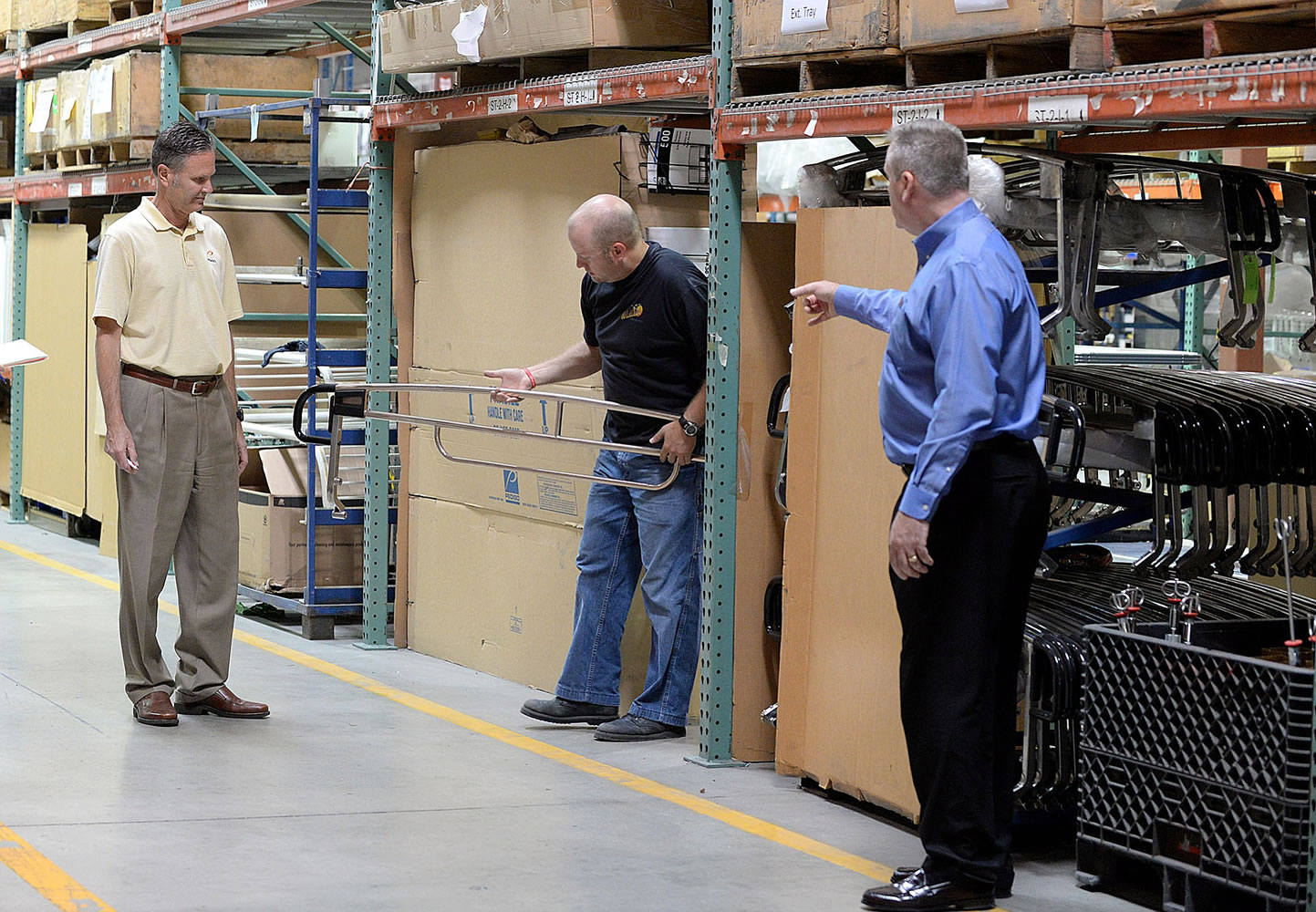On any given day, one in about 25 hospital patients has at least one health care-associated infection. In 2011, an estimated 722,000 patients contracted an infection in a U.S. hospital, according to the Centers for Disease Control and Prevention.
Those infections cost U.S. hospitals an estimated $30 billion or more per year in direct medical costs, according to the CDC.
Pedigo Products, a Vancouver-based hospital equipment manufacturer, hopes a line of new products will help bring those numbers down and prevent patients from contracting infections.
Instead of stainless steel, Pedigo is using CuVerro, a bacteria-killing copper alloy — a mix of copper and nickel — that continuously kills bacteria for some of its high-touch hospital equipment. Tests show that the copper alloy, which is registered with the Environmental Protection Agency, kills more than 99.9 percent of several bacteria within two hours and continues to kill 99 percent after repeated contamination. Those bacteria include MRSA, E. coli and strains of staph, among others. The copper doesn’t require any treatment, just regular cleaning.
“CuVerro is killing bacteria 24/7,” said Rick Pedigo, chief executive officer of Pedigo. “It’s a metal that doesn’t wear off. It’s permanent.”
About three years ago, Pedigo created an IV pole using CuVerro on the pole and on the handle used to move the equipment. Six months ago, Pedigo launched the Guardian stretcher with handrails made with the copper alloy.
Pedigo is currently working on a Mayo stand — a tray for instruments and supplies — using the copper alloy and is exploring other possibilities, such as hamper lids and instrument tables.
The goal is to target the high-touch surfaces in hospitals — the places where providers, patients and visitors touch the most, Pedigo said.
The stretcher handrail is a perfect example, Pedigo said. Emergency room staff touch the rail to move a patient to a room. The provider walks in the room and may rest their hands on the rail while talking to the patient. Family members may grab a hold of it when they visit the patient. And the patient touches it while lying in, or trying to get out of, the bed.
“It’s a very susceptible area for the transmission of bacteria,” Pedigo said.
“The side rail is meant to protect, not infect,” he added.
The copper surface doesn’t replace standard cleaning practices; regular cleaning protocol should continue, said Randy Koehler, engineering manager at Pedigo. Instead, it’s an insurance policy, an extra layer of protection, he said.
Laboratory work has been done to try to determine how the bacteria are killed in the alloy, Koehler said. While that work hasn’t led to any definitive conclusions, it has led to a couple of theories, he said.
One theory is that the copper ionizes and changes the DNA of the micro-organisms, making them incapable of reproducing, Koehler said. Another theory is the micro-organisms over-ingest the copper ions, he said.
“There’s no concrete knowledge out there on how it kills, just that is does,” Koehler said. “And it’s been very effective.”
The copper products are beginning to capture the eyes of hospital officials in the Northwest. Pullman Regional Hospital used a grant to purchase copper handles for the hospital’s existing IV poles. They’re mostly being used in the operating room, said Eric Hjort, Pedigo director of business development. The new Snoqualmie Valley Hospital purchased five of the stretchers with copper handrails. They’re being used throughout the small hospital, Hjort said.
In the last six to eight months, Hjort said he’s started hearing from more hospitals interested in the copper equipment.
“Word is getting out,” he said.
The average cost of a stretcher is about $5,000. Adding the copper handrails increases the cost by about $400. In contrast, treating a patient with a hospital-acquired infection can costs tens of thousands of dollars, Pedigo said.
And the financial impact doesn’t stop there. When a hospital has a patient contract an infection in the hospital, Medicare won’t reimburse the facility for that care. In addition, Medicare is now imposing penalties for hospitals with high numbers of certain infections.
“The potential financial cost for hospitals for hospital-acquired infections is huge,” Pedigo said.




